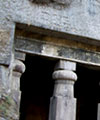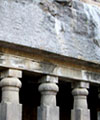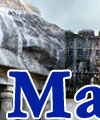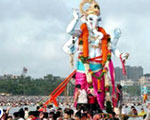| Encyclopedia of Tours and Travel to Maharashtra, featuring information on Fairs & Festivals, Wildlife, Excursion, Adventure and Weather of Maharashtra. |
 |
 |
 |
 |
 |
 |
 |
||
|
Location
Mumbai has much to see. Once a tiny island overrun by swaying palm trees, it used to belong to the native koli fisher-folk, which still live here in their little villages surrounded by soaring skyscrapers. In the seventeenth century came Portuguese colonists who dotted the island with several forts, which stand even today. In 1661, Mumbai was finally ceded to Charles II of England and eventually became one the largest ports in the British Empire. In fact the city owes its origins essentially to the Raj. Most of its stately public buildings such as the Venetian Gothic University, the Gothic High Court and the Indo - Saracenic Prince Of Wales Museum were built during this time, and when the first railway line started functioning in 1857, thousands of Indians from all over the country poured in to work in the city's flourishing textile mills. Now the mills have all but closed down, but much of the downtown area is still exactly as it was, full of graceful old colonial buildings that has obviously seen better days. Through them you can virtually trace the rise and fall of the British Empire in India. The Original Islands
The nearby islands of Trombay and Salsette were also merged to form the surburban Greater Bombay. The Remaining Islands are:
Mumbai State Maharashtra Bombay, is the capital of the state of Maharashtra, and the most populous city of India, with an estimated population of about 13 million (as of 2006). Mumbai is located on Salsette Island, off the West Coast of Maharashtra. Along with its neighbouring suburbs, it forms the world's 4th most populous metropolitan area, with a population of about 20 million. The city has a deep natural harbour and the port handles over half of India's passenger traffic and a significant amount of cargo. Mumbai is the commercial and entertainment capital of India, and houses important financial institutions, such as the Reserve Bank of India (RBI), the Bombay Stock Exchange (BSE), the National Stock Exchange of India (NSE) and the corporate headquarters of many Indian companies. Mumbai has attracted migrants from all over India because of the immense business opportunities, and the relatively high standard of living, making the city a potpourri of various communities and cultures. The city is home to India's Hindi film and television industry, known as Bollywood. Mumbai is also one of the rare cities to accommodate a national park, the Sanjay Gandhi National Park, within its city limits. Name |
|||||||||
|
|||||||||
|
|||||||||
|---|---|---|---|---|---|---|---|---|---|